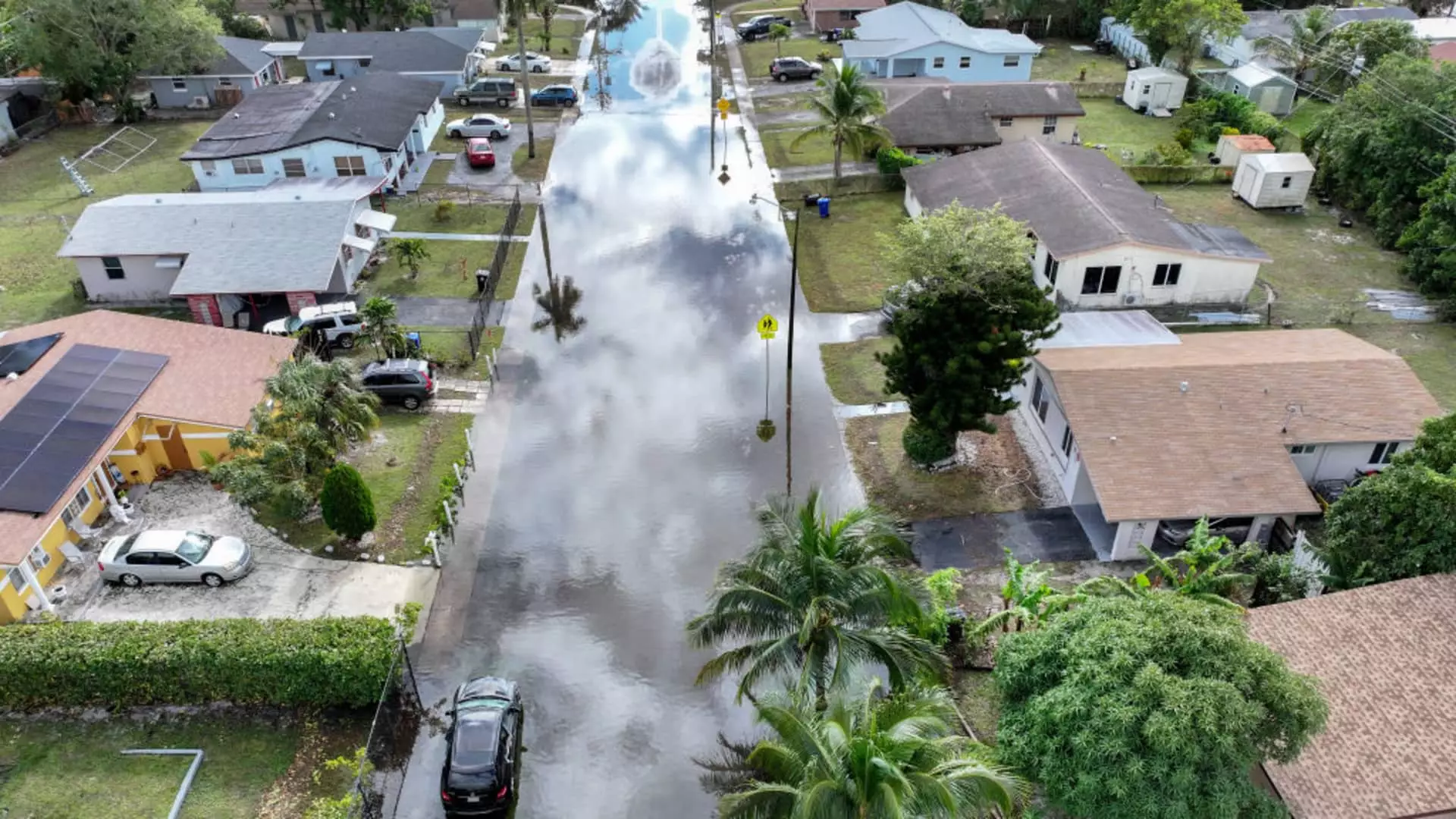When stepping into the realm of homeownership, few realize that the path to securing a mortgage doesn’t solely revolve around one’s financial standing. Until recently, conventional wisdom suggested that income, debt levels, and credit scores were the primary determinants of eligibility. However, a troubling new dimension has emerged: climate change and its insidious impact on the mortgage landscape. As natural disasters become more rampant and destructive, lenders are forced to reassess their risk models, incorporating environmental factors that were previously neglected. This shift not only reflects a change in lender practices but highlights a broader societal issue that demands urgent attention.
The Financial Fallout of Climate Change
It’s not just echoes of hurricanes, floods, and wildfires that are rattling the financial sectors; it’s the staggering monetary implications they carry. A recent report by First Street, a climate risk assessment organization, sheds light on a grim future: foreclosures linked to climate disasters could cost banks up to $1.21 billion in losses this year alone, growing to an eye-popping $5.36 billion in just a decade. Such figures represent a monumental percentage of total foreclosure losses, indicating the urgent need for lenders to sit up and take note. Notably, the states most affected—California, Florida, and Louisiana—stand as stark reminders of the powerful correlation between climate threats and economic risks.
However, this revelation raises an inevitably troubling question: when will consumers face the consequences of lenders’ newfound awareness? As lenders begin to integrate climate data into their underwriting processes, it’s likely that those residing in high-risk zones will experience a dip in their credit scores. The unfortunate reality is that this will likely lead to higher borrowing costs—a vicious cycle where the very individuals most vulnerable to climate change will bear the brunt of its financial ramifications.
The Ineffectiveness of Existing Measures
Current protocols surrounding mortgage lending have not kept pace with the realities on the ground. Many lenders might insist on flood insurance for properties located in designated flood zones, but they overwhelmingly fail to factor in the long-term risks posed by climate change. This glaring oversight is alarming, particularly in an era where environmental extremes are becoming normalized. Compounding the issue, prominent entities like Fannie Mae—who play a pivotal role in the mortgage sphere—have been sluggish to adapt, despite awareness of this crises two years ago.
Furthermore, the Trump administration’s cuts to FEMA staff and disaster funding only deepen the uncertainty, stripping away vital resources needed to navigate these increasing risks. While insurance premiums skyrocket, homeowners in perilous zones are left with dwindling options as they grapple with the harsh reality of increased costs and potential foreclosures. The situation paints an unnerving picture for potential homeowners, particularly for those eyeing properties in risky coastal regions that often symbolize the American dream.
The Broader Impacts on Society
The reverberations of climate-related mortgage risks extend beyond individual financial burdens—they usher in far-reaching implications for entire investment frameworks and broader societal structures. When homeowners can no longer afford their increased premiums or succumb to foreclosures, it sends shockwaves throughout local economies and beyond. These trends create systemic financial risks that cannot merely be dismissed as isolated incidents. This situation magnifies the importance of addressing climate risks at the regulatory level before they proliferate into a full-blown crisis.
From a liberal standpoint, this exacerbating situation should be a call to action. Policymakers must recognize the urgent need for strategic interventions that address both climate challenges and mortgage market vulnerabilities. By fostering resilience and adaptability within these systems, society can work towards sustainable solutions that benefit everyone, particularly those who find themselves at the mercy of environmental forces.
Rethinking the American Dream
Ultimately, the integral connection between climate change and mortgage lending beckons a reevaluation of what the American dream means today. The traditional narrative of homeownership is being redefined in a world grappling with climate-related turbulence. As consumers find it increasingly difficult to secure affordable home financing, consideration must also be given to the moral implications and responsibilities that lenders carry regarding climate risks.
Adapting to these realities is not merely a matter of financial prudence; it is about safeguarding the very essence of what homeownership represents. As we inch toward a future where climate realities become increasingly inescapable, it’s imperative that all stakeholders—lenders, consumers, and policymakers alike—recognize the importance of addressing these challenges head-on. Failure to do so not only jeopardizes financial institutions but threatens the sanctity of the dream that so many strive to attain.

